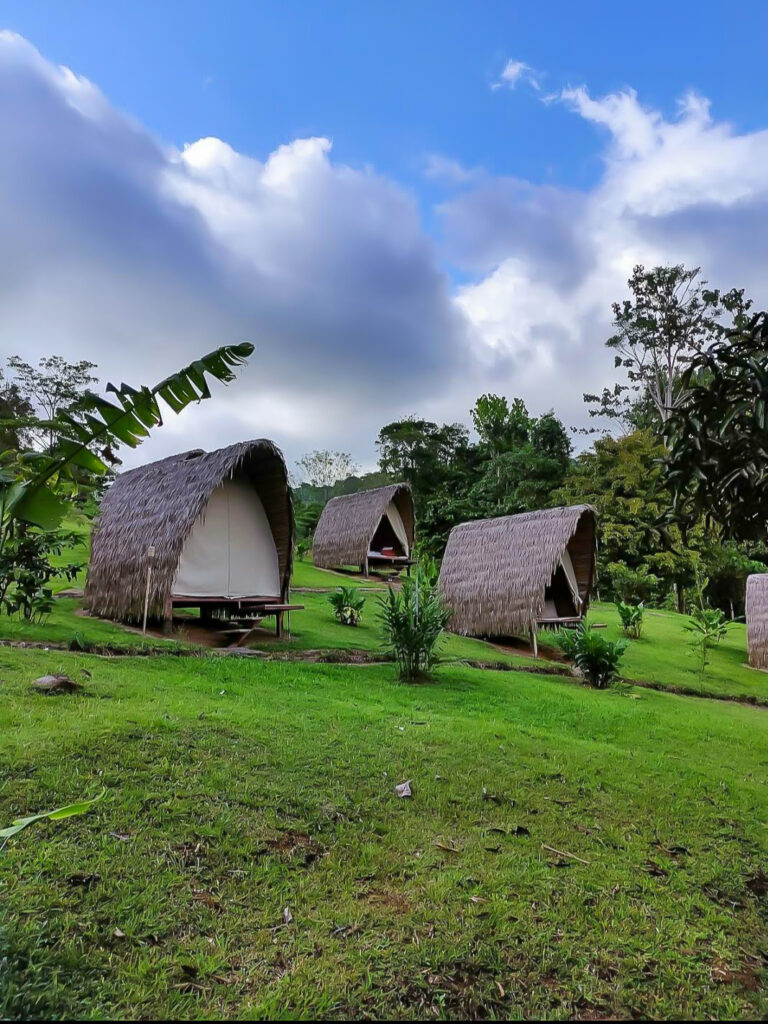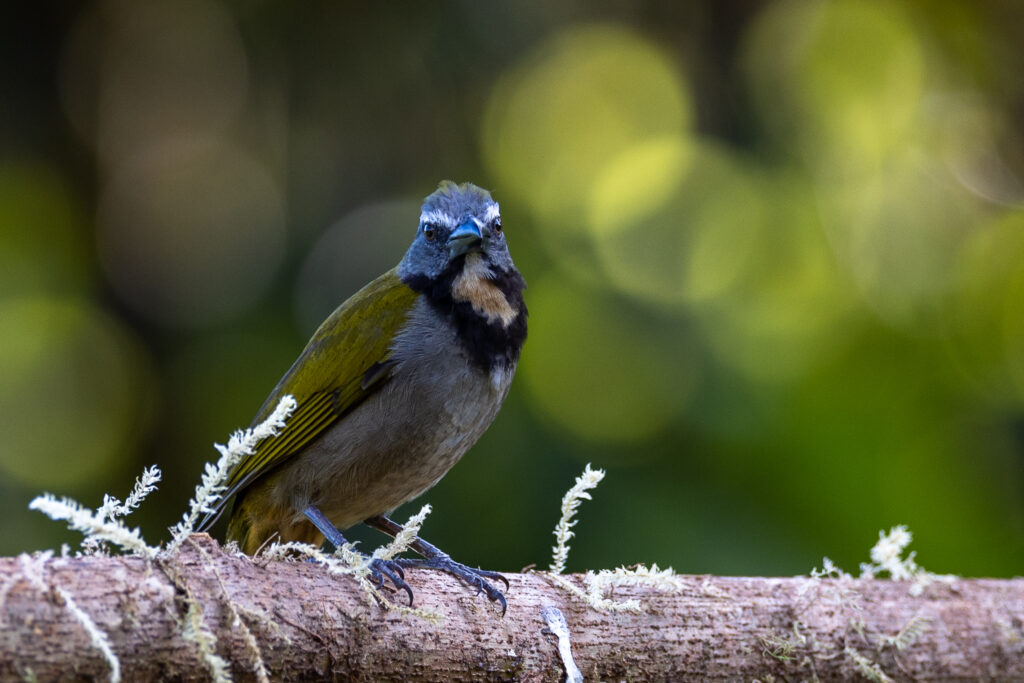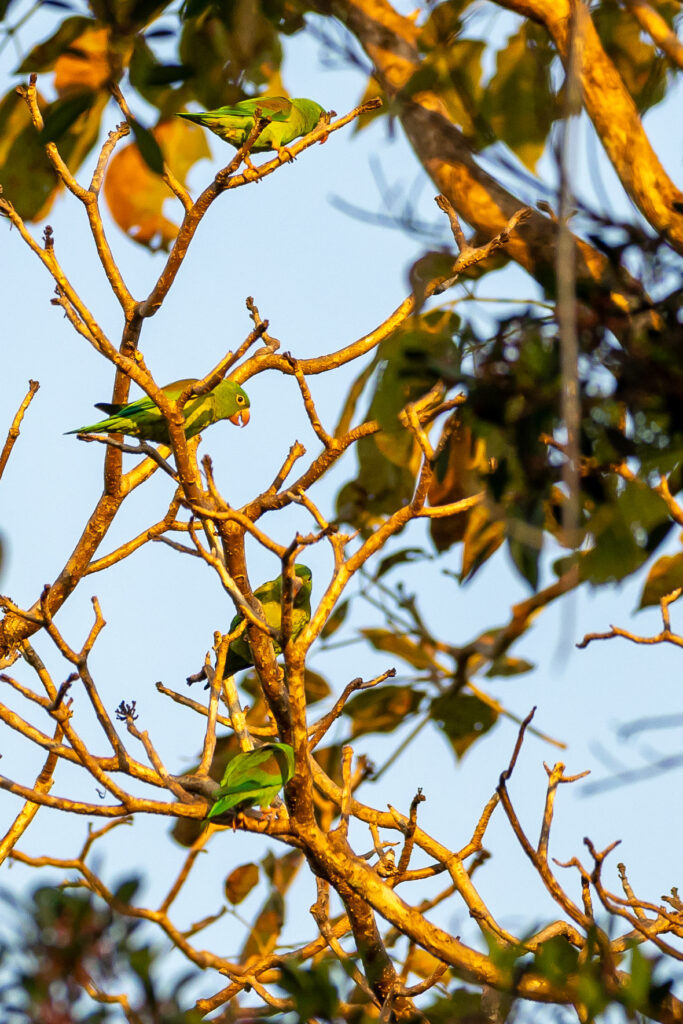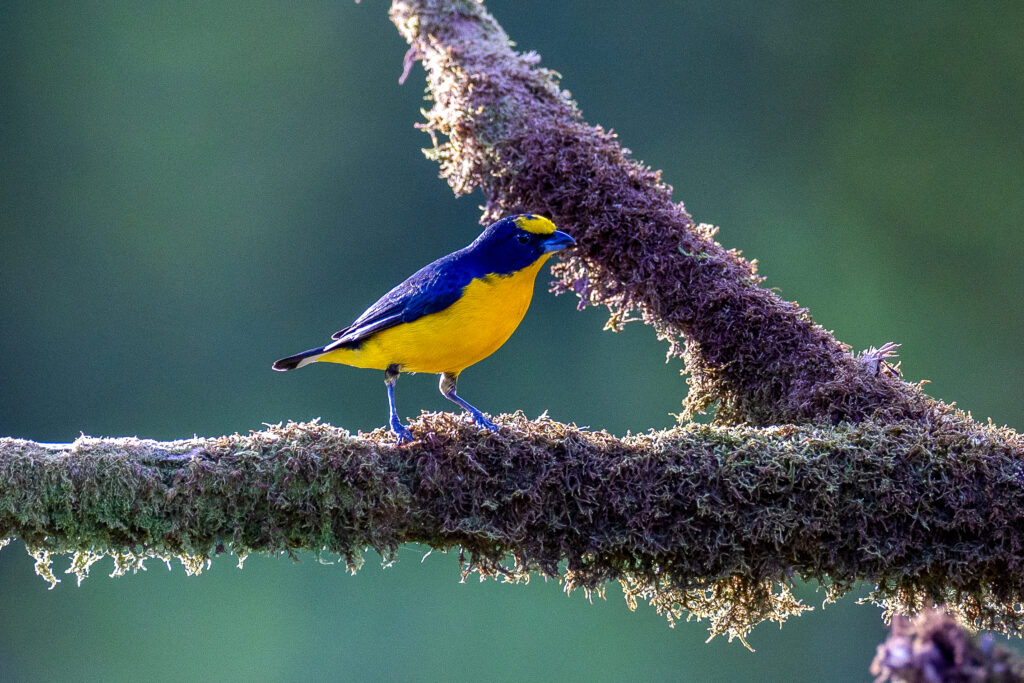Traveling a bit away from the park to find birds.
After being way out in the country for a week, arriving in Manuel Antonio, or rather the town of Quepos, was a shock! The crowd of beachgoers and tourists was overwhelming. We stayed for 2 nights at a nice hotel with a decent sized pool and right at the entrance to the park. As Jackie put it, there were 2 jungles, the one we had come to visit and the one we needed to avoid.
The park is not known for bird watching, so we found someone to take us 45 minutes away early in the morning to Esquipulas Rainforest Lodge. https://www.tripadvisor.com/Attraction_Review-g309274-d23908516-Reviews-ESQUIPULAS_RAINFOREST-Manuel_Antonio_Quepos_Province_of_Puntarenas.html.
This is one of the most unusual AirB&B setups I have ever seen. Each of these units is perfect for a couple. They serve an amazing breakfast, which we also got as part of the birdwatching tour. They also offer breakfast for birds with bananas and other fruits. Luring the birds this way felt a bit like cheating for the photographer in me but, on the other hand, I got relatively clear pictures and ID’s on many birds I might not otherwise have seen in the light of day and which I later spotted on walks in the forests. (Picture of the huts, courtesy of Jackie!)

The Blue-grey Tanager is certainly one of my favorites. We saw many of them again the following week in the Osa Peninsula. What a spectacular color!








The Buff-throated Saltator, a new bird for me that day.

Two types of orioles, the common (to us in New England) Baltimore and the Black-cowled Oriole, who only made a brief visit that morning..



The Cherrie’s Tanager (formerly called the Scarlet-rumped Tanager) is common but always thrilling to see in flight. That photo will have to wait till next year, sadly! The female plumage has shades of brown and green, so not flashy, but still quite pretty.




Another beautiful sexually dimorphic bird, where the male and female exhibit different coloration, is the Honeycreeper. The deep blue is the male and the beautiful green is the female.








The relatively common Golden-naped Woodpecker is about the size of our Red-bellied and quite stunning in the light.




On our way to the coffee farm, we stopped to look at a tree full of what I think were green parakeets.

The Thick-billed Euphonia (black and yellow) was another new one for me.


With all of these strikingly lovely birds, there is actually one that stands out for me – the Summer Tanager. Last year I only saw one and it was in the middle of a molt. There was such a one again at the site this year but then a bird flew in with fully developed plumage. WOW! So, the first picture is one in the middle of a molt and the next is all ready to find a mate! It sort of redefines “red!”





The largest fruit eater that day was the Aracari. They are, of course, spectacular!





On our walk around the property we saw a couple of nice insects, a Roadside Hawk, and way off in the distance was a Lineated Woodpecker sharing a tree with a Masked Tityra, and on the next tree a White-crowned parrot. I have better pictures of the woodpecker and parrot from other days, so I will only include the Masked Tityra here. (The first picture of it is for perspective, with the woodpecker siting above.)





